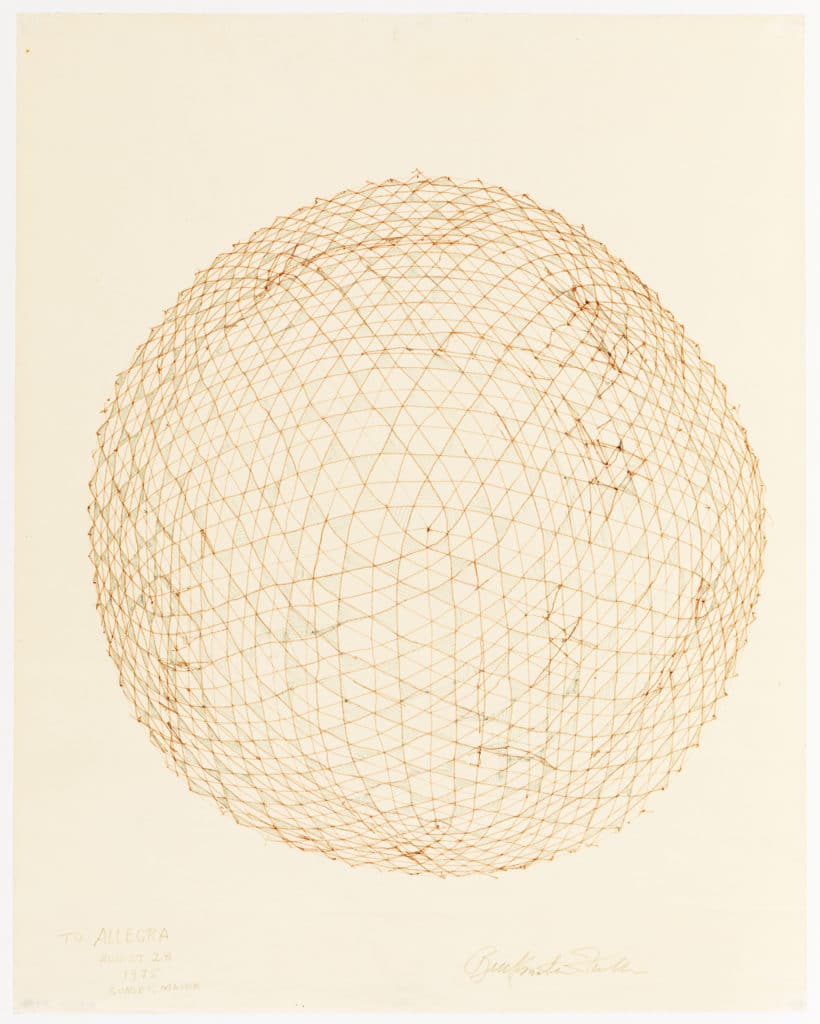Buckminster Fuller’s Geodesic Sphere

Frail and delicate, Richard Buckminster Fuller’s drawing of a geodesic sphere floats, without context, in the space of the paper it inhabits. More than the form it reveals, the net of thin, red lines expresses the presence of the space within it. A perspective effect emanates from the central point of the image so that the triangular modules grow increasingly compressed as the surface curves round, and this results in a greater density of material around the edges — of red ink and pale grey pencil lines. The centre seems to glow, pushed forward by a gentle pressure on the other side. Made in 1975, the drawing represents several of the many trains of thought that Fuller followed in his long creative life. Most directly, it relates to the geoscope that Fuller had described in 4D Time Lock, which initially was a huge planetarium. From inside the sphere it was possible to observe the moon and the starts, but ultimately to see them in relation to the Earth itself. Later, between 1965 and ’75, the geoscope was developed as part of the World Game, originally devised for the 1967 World Expo in Montreal. This interactive device constituted a huge sphere covered in coloured lights and connected to a computer so that it could display large-scale data patterns related, for example, to population, natural resources or means of communication in transformation around the globe. The clustering and tightening of the net in the drawing, and places where lines are duplicated or errant indicate these shadows of data-emotion moving over the face of the sphere. Fuller’s impetus was utopian, and the interconnected parts of the drawing are like a model for his ideal society — where in place of the selfish motives of a merciless society he proposed an ethic of acting together for the common good — echoing the utilitarianism of Jeremy Bentham and interpreting it through technological and ecological means. The World Game had unexpected consequences, however, by inspiring the discovery of a new class of carbon molecules by Kroto, Smalley and Curl who had visited the Expo Dome in 1967. They named the molecule the Fullerene, since the dynamic geometry of the geodesic dome had led them towards the icosahedral symmetry of the ball-shaped cage molecule.
This text is excerpted from Drawing Architecture (Phaidon, 2018) by Helen Thomas, which brings together over 250 drawings, with short narratives for each one about the circumstances in which they were made, the techniques used to produce them, and the realities that they were depicting.

– Dhruv Mehta